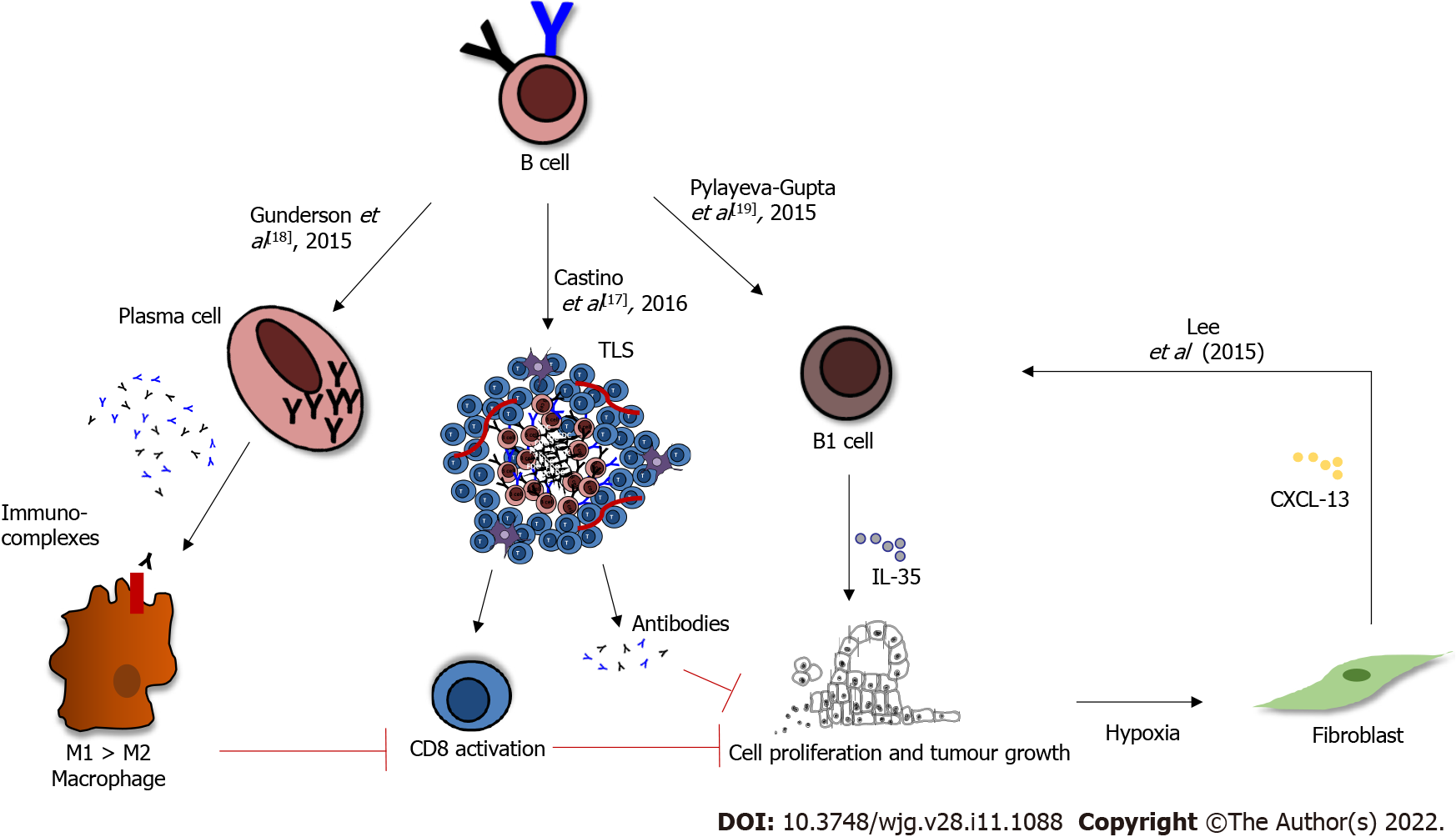Copyright
©The Author(s) 2022.
World J Gastroenterol. Mar 21, 2022; 28(11): 1088-1101
Published online Mar 21, 2022. doi: 10.3748/wjg.v28.i11.1088
Published online Mar 21, 2022. doi: 10.3748/wjg.v28.i11.1088
Figure 1 B-cell role in pancreatic cancer.
B cells mature in plasma cells, which can produce immunoglobulin G, and are able to reprogram the M1 macrophage phenotype to M2 via Bruton’s tyrosine kinase activation. B regulatory cells are able to produce immune-suppressive cytokines, which inhibit the anti-tumour immune response, leading to tumour growth. Furthermore, in presence of hypoxia, stromal fibroblasts can secrete chemokine (C-X-C motif) ligand 13, which recruit B regulatory cells (CD1dhiCD5+) and B1 B cells, resulting in faster tumour growth. Clusters of B cells, with follicular dendritic cells and T cells, are sites for T cell priming and B cell maturation and differentiation into antibody-producing cells, with anti-tumoral effect. TLS: Tertiary lymphoid structures; IL-35: Interleukin-35; CXCL-13: Chemokine (C-X-C motif) ligand 13.
Figure 2 Mechanisms by which B cells regulate tumour growth.
Different conclusions drawn from human and mouse studies can be accommodated within this model which takes into account the different intra-tumour and peripheral immune-responses. In vitro and in vivo studies usually measure the functional immune response in secondary lymphoid organs or blood, rather than studying the infiltration and the spatial organisation of different immune cells within the tumour microenvironment. In the pancreas, B cells can form clusters with T cells, named tertiary lymphoid structures, which are sites of antigen presentation, CD78 activation and antibody production. However, in secondary lymphoid organ the presence of B cells during T cell priming can skew the immune response towards Th2, attenuating Type 1 response. Furthermore, B-regulatory cells can produce immune-suppressive cytokines, which inhibit the anti-tumour immune-response. Finally, a positive correlation is found between serum immunoglobulin G (IgG) 1 and increased survival. However, repeated isotype switching within IgG subclasses generates in human IgG4, an isotype that has been linked to regulatory functions, in mouse models IgG2a, with pro-inflammatory functions. TLS: Tertiary lymphoid structures; IL: Interleukin; TGF-beta: Transforming-growth factor-β.
- Citation: Delvecchio FR, Goulart MR, Fincham REA, Bombadieri M, Kocher HM. B cells in pancreatic cancer stroma. World J Gastroenterol 2022; 28(11): 1088-1101
- URL: https://www.wjgnet.com/1007-9327/full/v28/i11/1088.htm
- DOI: https://dx.doi.org/10.3748/wjg.v28.i11.1088










